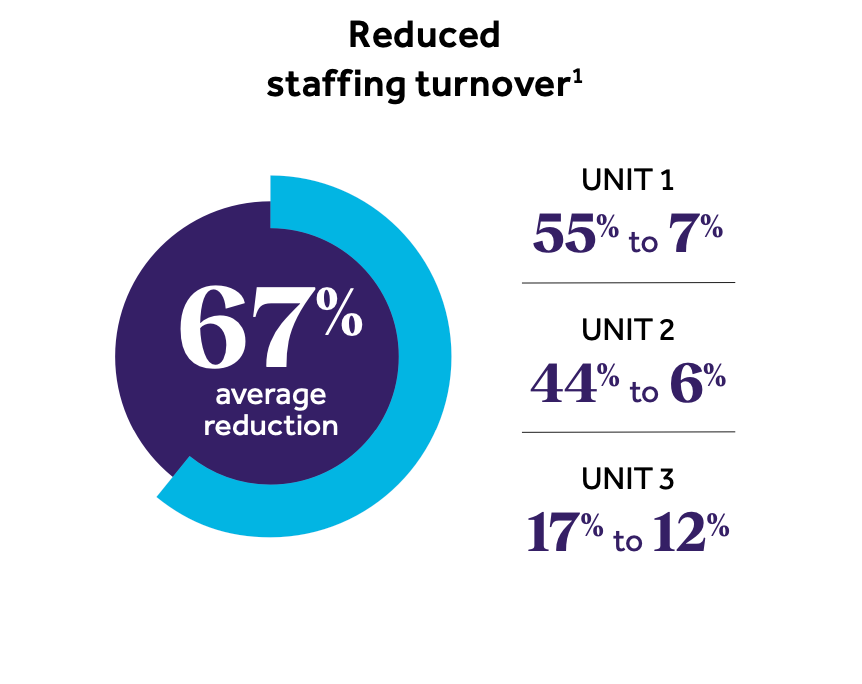Transforming care models with virtual nursing and scalable, end-to-end technology


Client success story

Not-for-profit healthsystem serving Oklahoma
Background
• 2 million people supported across 39 counties
• 12,000 employees
Virtual care offering
• Inpatient virtual nursing
For more than 60 years, Saint Francis Health System has served its community of Eastern Oklahoma with compassionate, high-quality care. Like many health systems across the nation, Saint Francis faced staffing shortages and recruitment challenges, especially for nurses in the medical/surgical units at its hospitals. This led to increased financial pressures from rising labor costs, high turnover rates, and the need for temporary workers. In addition, Saint Francis’ leadership felt that its existing model of care, which had been in place for many years, would not be sustainable in the future. The health system was looking to evolve its care delivery model to provide more efficient, patient-centered care.
Saint Francis needed to implement a new model of care, powered by innovative telehealth technology, that could empower its registered nurses (RNs) to practice at the top of their license and expand their scope of services. They looked to use Licensed Practical Nurses (LPNs) and nursing technicians at the bedside to support RNs. Additionally, as part of a broader retention initiative, Saint Francis sought to develop a mentorship program that would cultivate its nursing workforce internally, supporting newly licensed RNs and helping LPNs grow their careers within the health system. Saint Francis looked to Teladoc Health® and its innovative technology to embark on a virtual nursing pilot program for three medical/surgical units.
When Saint Francis was assessing its technology needs, the Teladoc Health virtual nursing solution addressed areas where Saint Francis' current platform fell short—from better camera controls to support for acute care settings to full fleet monitoring. Teladoc Health met Saint Francis' key requirements, including integration with EPIC, standardization to support virtual needs across all service lines beyond virtual nursing, and an end-to-end solution with the ability to scale in the future.

After partnering with Teladoc Health, Saint Francis implemented its virtual nursing pilot in three medical/surgical units. It managed the implementation through three task forces.
The nursing task force was comprised of IT partners, Teladoc Health clinical and technical advisors, nurse managers, and directors. Additionally, this task force included nurse managers from other units with potential for future scaling, which was identified as a best practice moving forward.
Teladoc Health has been right there with us every step of the way. Their team has brought so much time and expertise to help us build new workflows—this has empowered us to create a more sustainable model of care.
Cynthia Leathers
MBA-HCM, BSN, RN, Vice President and Chief Nursing Officer, Saint Francis Health System
The nursing task force was responsible for developing nearly a dozen virtual nursing workflows, including a task-oriented workflow to support the admission and discharge team. These workflows were reviewed by existing bedside unit teams and later by virtual teams, once they were hired, to allow input and necessary adjustments.
Saint Francis hired virtual nurses with five or more years of experience, including senior nurses who had considered retirement due to the physical demands of bedside nursing. Initially, the virtual nursing staff worked alongside bedside nurses, supporting 81 beds across three medical/surgical units to learn the workflows. They then transitioned to an operations hub, connecting with patients via Teladoc Health cameras. Thanks to Teladoc Health's reliable virtual care technology, these hubs can be located remotely; one hub is situated 55 miles from the campus it supports, while still coordinating effectively with onsite staff for case management.
Even early in the pilot period, virtual nursing showed significant impact in transforming inpatient care. A more efficient admission and discharge process enabled bedside nurses to dedicate more time to communicating with and educating patients and their families. Virtual nurses managed patient medication history documentation, providing physicians with more accurate, timely information and improving admission times. With the support of virtual nursing, the average discharge time decreased from 90 minutes to 54 minutes across the three piloted units.1
We would not have been successful if we didn't have the Teladoc Health expertise helping us identify swim lanes for different disciplines to drive our overall care. This helped us standardize our model so each unit is operating in the same way.
Sandi Wagner
MBA, MHL, BSN, RN, Virtual Services Director, Saint Francis Health System
Leveraging their prior experience, the virtual nurses also provided mentorship and support to newly licensed nurses, helping them develop skills and advance their careers with Saint Francis. This collaborative care model fosters the growth and retention of LPNs, technicians, and RNs while also strengthening academic partnerships.
In addition to other retention strategies, Saint Francis’ virtual nursing pilot was a major factor in reducing unit turnover, resulting in substantial savings for the health system. Over the first year of the virtual nursing program across three units, Saint Francis saved $900,000.
With the success of the pilot, Saint Francis plans to scale this model across the health system. In 2025, the second phase will support 200 beds, including a personal virtual sitter solution, which is projected to save the health system over $250,000. In 2026, phase three will expand to support an additional 351 beds.


1Saint Francis, “Considerations for Scaling a Virtual Nursing Program,” June 2024
2Saint Francis performance of HCAHPS (Hospital Consumer Assessment of Healthcare Providers and Systems) with CMS Benchmarks
* The testimonials and opinions presented are applicable to the client. Each client’s exact results and experience will be unique and individual. The testimonials are voluntarily provided and are not paid.